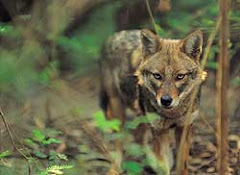One June morning about 25 years ago, I was leading a high school canoe camping trip down a stiillwater in Kings County when we rounded an elbow bend and found ourselves in the middle of a panicking family of Black Duck. Little ones scattered and hid while mom did her best to convince us she was an easy lunch. It was a teachable moment, so I used it and then moved the group on.
As we swung the next turn in the meander, a girl in a canoe near me shouted “Look. Mr. MacLeod! A real duck!” It was a Mallard male.
In 30 or more years on those waters, I’d never seen a wild Mallard. I’d heard rumours they were moving eastward from their prairie homeland, but the ubiquitous Black Duck had been there all my life and was what I expected, and in memories still do. I remember being slightly annoyed this suburbanite had been so brainwashed by cartoons and story books that she thought the fancy-dressed Mallard drake was the “real duck”. Sadly, I had no idea she was accurately predicting the future.
This August, I stuck my head into Hope Swinimer’s office and asked what was new that day for animals. Two Kestrel and another family of ducklings, the Director of Hope for Wildlife told me, so I asked her the species of her duck babies.
\
“How should I know?” she replied. “I can’t tell the difference any more. They all look the same these days.”
Swinimer went on to tell me this had been a very busy year for duck rescues. Most of them appeared to be Black Ducks, but had coloration differences that shouldn’t be there and confused the identification issue.
“They are all really pretty little ducks, but we really can’t tell right now what they all are,” she said.
The problem is, the Black Duck is a creature under siege. In Nova Scotia, the number of moms who get run down every year as they lead their ducklings across a road is increasing. More little ones show up at Hope for Wildlife as a result.
“If the mother is leading them across a road, they are going to water. It’s not a random thing.” Swinimer explained. “You may not see water, you may only see them holding up traffic, but you can take as a certainty that water is there.”
The other contributor is genetic, and there are a lot of scientific questions being asked right now about whether the Black Duck as a species will continue to exist. It started in the 1950s, but whether from habitat change, climate shift, disease, hunting, food shortages, or pressure from the Mallard is not yet known. What is known is that there are 50% less Black Ducks around now than back then.
More and more, the Mallard is being considered the source of the problem. It is believed the Black Duck (Anas rubripes) and the Mallard Duck (Anas platyrhynchos) are descended from a recent common ancestor. Genetically, they are almost identical. The Black is dark brown in both male and female, quite similar to the Mallard female. It is the green-headed breeding plumage of the Mallard drake that differs. When the two species overlap, as they have done for several decades in Nova Scotia, the Mallard drakes not only force Black Ducks out of their territory, they mate with their females.
The result has become a hybrid duck, once an anomaly but in the past few years more and more common. In some parts of the Atlantic Flyway, it is now estimated one out of every five Black Ducks carries Mallard DNA. Sometimes, strange feather patterns make it obvious, but more often a glint of the green Mallard drake head colour during mating season is the only evidence. As Hope Swinimer said, it’s making identifying the young ones very difficult.
In nature, most hybrids can’t reproduce, but that’s not true in this case. The complicating factor is that studies show 67% of the offspring of a Mallard/Black cross are male. For some reason, fewer females are produced, and those that are born of a cross-match seldom live to breeding age. This means it is the female Black Duck genes that are being gradually squeezed out of the pool.
Even before the hybridization crisis, Mallard drakes generally outnumber females and were very aggressieve during mating season. Unpaired males group together and engage in "rape flights" in which they attempt to islotate a female and attack her until she weakens, at which point they all mate with her. They sometimes also do this to smaller Mallard males. Often, the result is that the bird being attacked drowns. This "mate with anything" Mallard drake impulse is considered one of the reasons for hybridization, as a "rape flight" often involves a female of another duck species..
There's evidence that while the Black/Mallard cross may be the most familiar to us in Eastern Canada, it is not the only one. Mallard drakes are not only moving into Black Duck territory and dominating its females, they are doing it to many species throughout the Northerm Hemisphere. Hybrids reported include the Gadwall (Anas strepera), Pintail (Anas acuta), Green-winged and Eurasian Teal (Anas crecca), and Spot-billed Duck (Anas poecilorhyncha). At least those ducks are members of the same genetic family. The Mallard is also known to have reproduced with the Muscovy Duck (Cairina moschata) and the Wood Duck (Aix sponsa). In all, Mallards have shown the ability to cross breed with 63 duck species.
Whether it is evolution or something we’ve done to give Mallard males a social advantage is not known, but as Hope Swinimer said, it is getting much harder to say for certain that what appears to be a Black Duck is actually to be found in even in the most up-to-date Peterson Field Guide.
Friday, August 13, 2010
Subscribe to:
Posts (Atom)






